Ultralight Backpacking: Don’t Pack Your Fears
By Jay Johnson
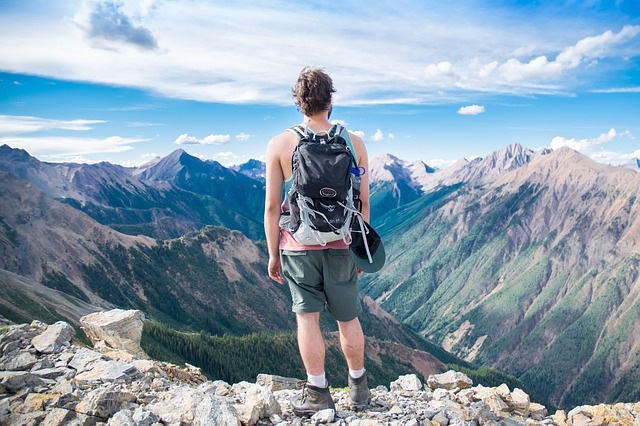
Here’s the essential, no-nonsense guide to Ultralight Backpacking from a trusted authority (and, importantly, a proper practitioner – not a keyboard warrier!) on the subject. Jay Johnson breaks it down for you from tried and tested kit recommendations through to how to effectively apply UL backpacking principles to your outdoor ventures. I’m delighted that Jay agreed to create this guide for an activity that shares a lot of “common DNA” with the ethos of tenkara as it relates to general fly fishing. In fact, anyone who spends time outdoors (or who often feels overwhelmed by modern life’s complexity) will learn a lot from his wisdom in this post: Take it away Jay…
Ultralight Backpacking vs. Tenkara
For many, tenkara and ultralight backpacking go hand in hand. Numerous ultralight backpackers have stumbled across tenkara in search of a simple, lightweight, and compact solution for fishing while in the backcountry. The ultralight backpacking community has embraced tenkara due to its simple and utilitarian nature.
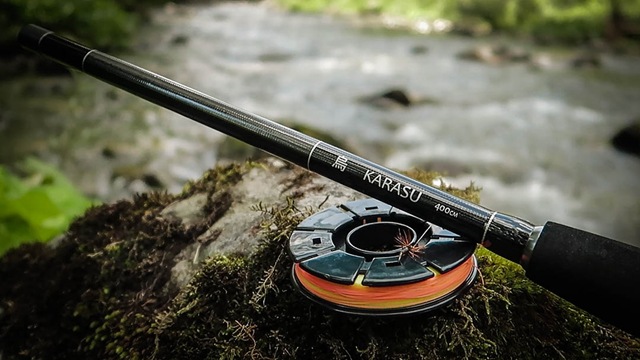
Tenkara anglers could benefit from embracing the ultralight community as well. Ultralight backpacking enables you to hike further, faster, and safer. It also leaves room in your pack for luxury items like a nice camera, some booze, or a full tenkara setup (like the one shown above).
But What Exactly is Ultralight Backpacking?
In general, backpackers use their base weight (the weight of carried gear minus consumables like fuel, food, and water) to categorize their backpacking style
Lightweight (LW) backpacking involves a base weight of less than 20 pounds, an ultralight (UL) base weight is sub 10 pounds, and super ultralight (SUL) carries a base weight under 5 pounds. As the ultralight community evolved, the focus on pack weights like 5, 10 or 20 pounds have all but vanished in favor of an ultralight philosophy rather than arbitrary base weights. People realized you can backpack in -10°F, or be on an elk hunt or fishing trip, carry more than a 10-pound base weight out of necessity and still practice ultralight principles. So, if a sub 10-pound base weight isn’t the magic number to aim for, how does one become ultralight?
The Philosophy and Practice of Ultralight Backpacking
Ultralight backpacking philosophy can be summed up in one tenet:
“Take less stuff”
It’s as simple as that. And as simple as that sounds, it’s often the most difficult mental obstacle for people to overcome. To start, dump out your pack and do a mental inventory of everything you carry and ask yourself, “Do I need this?” Do you have 2 extra pairs of shorts, 4 pairs of socks, and 3 shirts for a 3 day, 2 night trip? You don’t need it. You only need the clothes you hike/fish in and a set of dry clothes to sleep in at night. Embrace the stink and wear your hiking clothes for multiple days at a time.
What Else to Strip Out
Now that you’ve trimmed redundancy in your clothing, let’s look at some gear. You don’t need two bowie knives, a neck knife, and a folding knife. You’re not fighting off bears or ISIS and you’re not building a tree house. A simple folding knife or a light, fixed blade knife under 4” is more than enough for the reality of its use, which is usually opening up a stubborn food bag or cutting some cord. Use this approach on all your gear to remove multiples of items and to ensure you are carrying appropriate items.
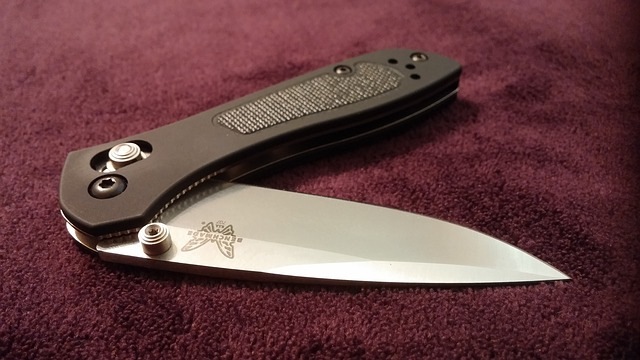
After removing duplicate items, it’s time to take even less stuff. A lot of the consumables we carry don’t count towards our base weight but are still felt on our backs. Weight can add up quickly when it comes to sun screen, bug spray, soap, toothpaste, etc. Rather than taking a full 6oz bottle of bug spray, repackage it into a 0.35oz or similar size mini spray bottle.
You might be thinking a difference of 5.5ish ounces isn’t that much, but when you apply this principle across multiple areas, especially liquids, you start to shed pounds rather quickly. Streamlining the amount of gear you carry is the easiest and most economical way to lighten your pack, but eventually money will come into the equation.
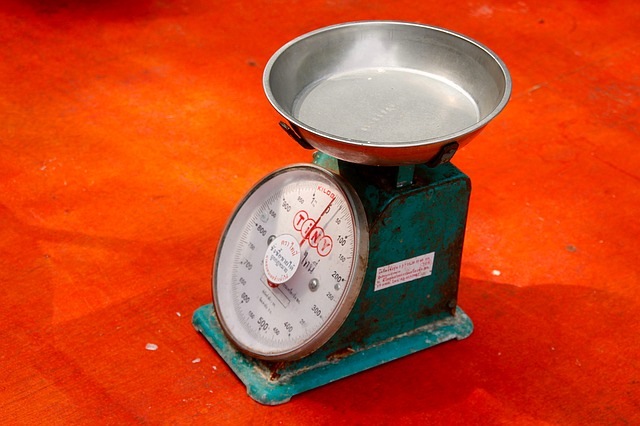
The FIRST thing you should buy, if you don’t already have it, is a scale. You don’t need a drug dealer quality scale, but you want one that can weigh multiple pounds and still have accuracy down to one- or two-gram increments. Now, weigh everything you carry. If you have an appreciation for organization, create a LighterPack to generate a pack list and visualize your heaviest items with the automated pie chart built into the site. Even if you don’t take the LighterPack route, it helps to write down numbers. This will help you determine which items to start replacing.
What to Buy?
The Big 3
The heaviest items for backpacking are most likely your backpack, shelter, and sleeping bag, collectively known as The Big 3. If you are going to spend money replacing your gear for lighter options, it’s a good idea to target these three items.
With that said, I would recommend getting a new backpack last
Ultralight backpacking tends to not only decrease the weight of your gear, but also the volume. Lower weight and volume gear allow for a smaller, lighter pack. Buying a new pack after replacing your shelter, sleeping bag, and other items like your sleeping pad, cook kit, etc. will allow you to pick an appropriately sized pack for your loadout.
Ultralight Backpacking Tents
Replacing The Big 3 can be expensive but will offer the most bang for your buck when it comes to buying a lower base weight. For example, an REI or Sierra Designs tent can weigh anywhere from three to five pounds and are quite voluminous. Looking to cottage gear companies that design and make their own gear in house provide much better options than major manufacturers found in Walmart, REI, MEC, or whatever local big box retailer available to you.
Dyneema Composite Fiber (DCF), formerly known as cuben fiber was originally used for sails on competition boats but have found a home in ultralight backpacking as stuff sacks, backpacks, tarps, tents and more. DCF is one of those things that will give most people sticker shock.
The Zpacks Duplex tent, a 2-person tent and a staple in the ultralight community composed of DCF, will set you back $600 USD. Is it worth it? Well, that depends. What DCF offers that most other materials do not is not only a tensile strength up to 15 times stronger than steel, but also has no stretch and is 100% waterproof. These features combined with extreme lightweight make a perfect combination for tarps and tents.
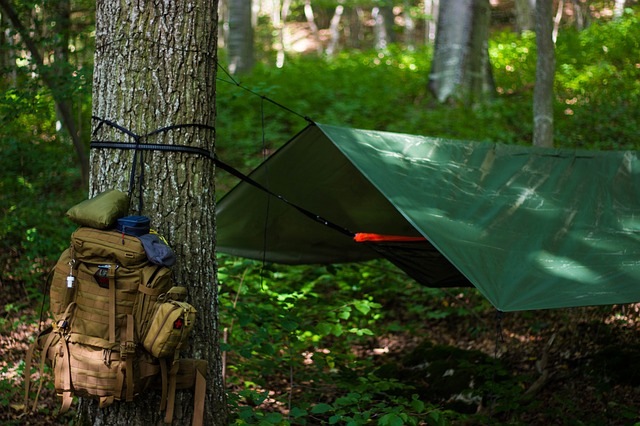
Ultralight shelters, however, do not need to be expensive. Many opt for a bivy + tarp combo. A DCF 7’x9’ tarp combined with a bivy or bug bivy can cost about $300 dollars and weigh as little as 10 to 12 ounces. $300 dollars for a shelter is comparable to major manufacturers at a fraction of the weight. If you are looking for more economical options, you can skip the DCF for a SilNylon or Silpoly tarp.
These materials are cheaper but will have some stretch (requiring guyline adjustments) and can become saturated with water (increasing your pack weight when wet). Anglers can really benefit from a tarp setup. Being next to water out of necessity involves conditions ripe for condensation issues. Tarps can be setup to allow for maximum airflow, mitigating condensation issues inherent in a more enclosed tent design. Whether you go for wildly expensive DCF tents or a more affordable option, replacing your shelter with an ultralight option is an obvious choice when aiming to drop pounds from your pack.
Sleeping Bag?
Moving onto sleeping bags, I offer a solution that some people are familiar with, while others might have some questions and doubt: Don’t bring a sleeping bag at all…
Instead, use an ultralight quilt
But why? First, let’s look at the standard mummy bag. The advantage of being fully enclosed in a puff of warmth sounds great, but it’s an inefficient design. When in a sleeping bag, a large portion of insulation is crushed underneath you, offering no warmth. It’s extra weight that has no use. Another problem with that crushed insulation is for people that find themselves tossing and turning in their sleep. As you rotate, your sleeping bag tends to rotate with you and that crushed insulation is now exposed to air creating cold spots and discomfort.
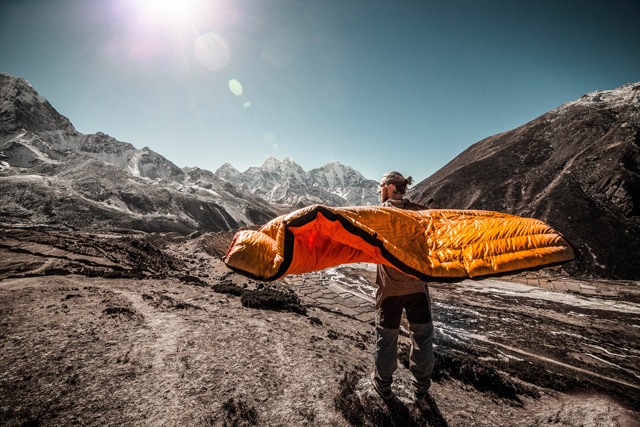
This is where a quilt comes into the equation. Think of the quilt not so much as just an ultralight blanket, but a mummy bag that has been cut and resewn in the appropriate places. Most quilts are designed to have a closed footbox of some sort and roughly a quarter length of zipper to contain your feet. Beyond that, quilts have various strap systems, depending on manufacture, which strap your quilt onto your sleeping pad to remove air gaps and cold spots.
The beauty of this is, when tossing and turning, the quilt stays in place on your pad. No crushed insulation. No cold spots. Cottage brand quilt makers also offer superior customizing options compared to the big brands. Sizing a quilt to your desired length and width means maximum efficiency for heating up only the insulation that will be used to keep you warm. Ultralight quilts range anywhere from budget brands to top of the line, but a couple things usually hold true:
- A quilt will always be lighter and take up less space than a bag when comparing equal temperature ratings
- A quilt is usually cheaper when comparing high end models and equal temperature ratings
In the end, you can get a warmer, smaller, and lighter quilt for cheaper than a standard sleeping bag.
Ultralight Backpacking: Backpacks!
It’s time to talk about backpacks. First, you don’t need one with 20 pockets, multiple attachment points to hang excess gear, a brain (compartment on top of the bag), or 70-liter capabilities. Bags with these options often find themselves weighing up to 5 pounds! That’s before we even put anything in it. That’s crazy talk!
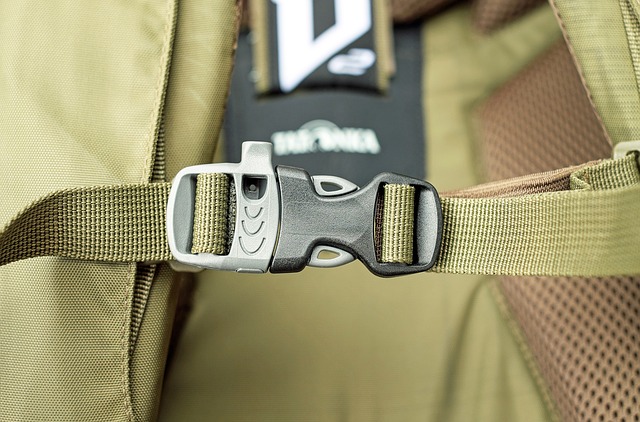
As you dial in your ultralight gear, you’ll find that it is quite compact and as your weights decrease, so does pack volume. As base weights drop down into the 15, 12, 10 or *gasp* 7-pound range, you’ll no longer need ultra-beefy packs with massive hip or shoulder pads and quite often can lose the frame in favor of a frameless pack.
Realistically, you only need a pack with a main compartment, a couple side pockets for water bottles (or storing tenkara rods), a mesh back (for easy access items or drying stuff), and maybe some hip pockets for convenient storage. A general rule of thumb is if your total pack, including consumables is less than 20 pounds, a frameless pack with wide shoulder straps is quite comfortable. These types of packs generally weigh 10 to 14 ounces and cost less than many packs at your local retailer.
If your total weight with food is above 20 pounds, this is where packs with frames or metal stays attached to a hip belt come in to play. These more supportive packs will run around the same price as “traditional” packs but with half the weight or less.
Where to Draw the Line for Buying Ultralight Kit
After The Big 3, there are plenty of other options for you to replace your gear with lighter options. Major brands have realized the desire for ultralight sleeping pads. This is one of the few places where Therm-a-Rest, Big Agnes, Nemo, REI, etc. have legitimate ultralight options for full length inflatable sleeping pads that offer warmth and comfort but still weigh between 10 and 16 ounces.
An even lighter option would be closed cell foam sleeping pads as thin as 1/8th inch thick. The idea here is that the pad is more for stopping conductive heat loss and less about comfort. To find comfort with a super thin CCF sleeping pad, campsite selection will involve looking for soft areas with comfort (grass, duff, rich soil) built into the ground.
After the The Big 3 + sleeping pad, buying weight savings becomes increasingly less cost effective
Are Ultralight Backpacking Stoves (and UL everything else) Worth Your Money?
Bottom line? Titanium cook kits, ultralight stoves, titanium tent stakes, insulated jackets, headlamps etc. tend to be expensive items compared to their heavier counterparts and at this point, you might be able to drop an ounce or two from a single item, but it’s not dramatic weight savings like the previous major items.
Getting Serious and Systemising Your Ultralight Backpacking
If you’ve made it this far, I might as well bring up the next level of ultralight backpacking which involves using the entirety of your gear as a system. For instance, there are some pretty good lightweight options out there for pillows. However, you could also use a stuff sack with your non-sleep clothes stuffed inside and a buff around the outside to create a soft pillow to sleep on.
Instead of taking a full-length sleep pad, you could use a torso length pad to cushion the heavier pressure points like your shoulders, hips, and butt, then use your empty backpack to stop conduction under your legs and feet. It’s all about getting back to the philosophical idea of taking less stuff. Ask yourself: Do I need this item?
Don’t Pack Your Fears
An important mantra in ultralight backpacking is “Don’t pack your fears.” We bring giant knives because of the fear of, “what if I’m in an emergency situation and I need to build a shelter, spear some game, or cut my hand off that’s stuck underneath a fallen boulder.” We bring med kits that weigh 3 pounds because we’re told to and it makes us feel safe. But coming from an EMT, I promise you most of the stuff that comes in generic pre-made first aid kits aren’t going to save your life.
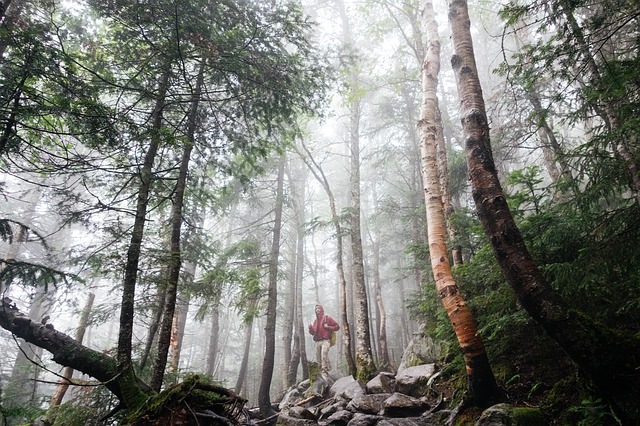
Realistically, the top three ways people die in the outdoors are Falling, Drowning, and Heart Attack. You’ll probably have less of a chance of falling if you don’t overburden yourself with a heavy, unbalanced pack. As for drowning and a heart attack, CPR weighs nothing. Now, I’m not telling you to pack stupid light or not bring any sort of med kit. But don’t fall into the trap of being overburdened by “what if’s”.
From This Article, Too: Only Take What you Need
So, whether you want to go all out and replace your kit with ultralight gear, or simply want to apply the principles of taking less. I encourage tenkara anglers to start looking at their backpacking gear critically. Sleeping on a torso length, 1/8th inch CCF sleeping pad isn’t for everyone, but don’t mistake ultralight backpacking with being uncomfortable and don’t get hung up on weights.
In the end, it’s all about getting outdoors. Get outside. Go deeper into the mountains up into the Genryu areas. Do it with a lighter pack.
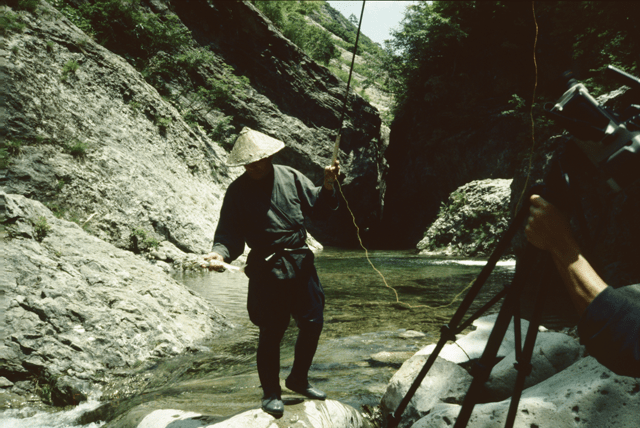
To help you get started with your quest for ultralight philosophies and gear, check out these sources and companies:
Andrew Skurka – he’s done it all when it comes to ultra-distance, ultralight backpacking
Ray Jardine – do it the Ray-Way, learn from the godfather of ultralight DIY gear
r/ultralight – subreddit dedicated to ultralight backpacking
Backpackinglight – website and forum where many people first learned about ultralight
Litesmith – ultralight accessories like mini-scissors, mini-bottles, headlamps, cordage, and more
Gossamer Gear – shelters, sleeping pads, accessories
Zpacks – shelters, backpacks, clothing, accessories
Mountain Laurel Designs – shelters, backpacks, quilts, accessories
Nunatak – quilts, sleeping bags
Katabatic Gear – quilts, sleeping bags
Enlightened Equipment – quilts, clothing, accessories
Montbell – their Japanese and International websites offer gear for ultralight backpackers & anglers
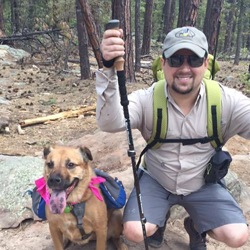
Jay Johnson is an ultralight backpacker obsessed with tenkara and Genryu. With an education background in Urban Planning, Sustainability, and Conservation Biology & Ecology, he not only takes an interdisciplinary approach to science, but approaches his hobbies with the same dedication to analysis and detail. He can be found at the Headwaters Facebook group with likeminded anglers who share their love for exploring mountain streams with a backpack and fishing rod.
Huge thanks Jay from me and JP – you’re the UL Backpacking OG Guru to us! It’s very striking how many common themes there are between this modern ethos of ultralight backpacking and the ancient skillsets of the Matagi bear hunters and Shokuryoshi (professional mountain fly fishers) of Japan. So tons of food for thought…
Paul
PS if you liked Jay’s info – you should share it by clicking the social share buttons on this page (other folks need to hear this too) – and if they’re SOMEHOW not already studying our free email lessons and updates – They can fix that by Clicking Here.
